Understanding Your Coverage Requirements with Help from a Texas Property Insurance Lawyer
Did you know that most insurance companies require Texas homeowners to insure their homes for at least 80% of replacement cost? This requirement isn’t just a suggestion—it’s a crucial factor that determines whether you’ll receive full compensation after a loss or face significant out-of-pocket expenses. Many Houston homeowners discover this harsh reality only after disaster strikes, when their insurance company applies a penalty for being underinsured. If you’re unsure whether your current coverage meets Texas requirements or worried about what happens if it doesn’t, understanding these rules now can save you from financial devastation later. Working with a Texas property insurance lawyer can help ensure your coverage protects your most valuable asset—your home—according to state requirements.
💡 Pro Tip: Review your insurance policy annually and compare your coverage amount to current construction costs in your area—building costs have risen significantly in recent years.
Don’t leave your property’s future to chance. Reach out to JCE Law Group today and get the peace of mind you deserve. Whether you’re questioning your coverage or dealing with a disputed claim, our team is ready to help you navigate the complexities with ease. Give us a ring at 504-754-5884 or contact us through our website to protect your investment.
Texas Law and the 80% Rule: What Every Homeowner Must Know
Under Texas insurance regulations, most companies enforce what’s known as the "80% rule," requiring homeowners to insure their property for at least 80% of its replacement cost value. Some insurers go further, demanding 100% coverage. This isn’t arbitrary—it’s designed to ensure adequate premiums are collected to cover potential losses across all policyholders. When you understand replacement cost vs actual cash value coverage, you’ll see why this distinction matters so much. Replacement cost coverage pays to rebuild or repair your home based on current construction costs, while actual cash value factors in depreciation, leaving you with far less compensation. A Texas property insurance lawyer often sees cases where homeowners thought they had adequate coverage, only to discover they’re severely underinsured when filing a claim.
💡 Pro Tip: Request a replacement cost estimate from your insurer every few years—don’t rely on tax assessments or market values, which are often much lower than actual rebuilding costs.
The Insurance Claim Process: From Damage to Settlement
When disaster strikes your home, understanding the timeline and requirements for filing a claim becomes critical, especially if you’re underinsured. The process unfolds differently depending on your coverage levels, and a Texas property insurance lawyer can guide you through each crucial step to maximize your recovery.
- Immediate notification: Contact your insurer within 24-48 hours of discovering damage to start the claims process
- Documentation phase: Photograph all damage, create detailed inventories, and gather repair estimates within the first week
- Adjuster inspection: Insurance company sends an adjuster within 5-15 days to assess damage and verify coverage levels
- Coverage verification: Insurer calculates whether you meet the 80% requirement and determines any applicable penalties (typically within 30 days)
- Settlement offer: If underinsured, expect reduced payment proportional to your coverage gap—this can mean thousands less than actual repair costs
- Appeal process: You have the right to dispute coverage decisions, typically within 60-90 days of initial determination
💡 Pro Tip: Keep receipts for all home improvements and upgrades—these increase your home’s replacement cost and should be reflected in your coverage amounts.
Protecting Your Rights When Coverage Falls Short
If you discover you’re underinsured after a loss, don’t accept a reduced settlement without exploring your options. JCE Law Group understands the complexities of Texas property insurance laws and can review your policy for potential remedies. Sometimes insurers fail to properly inform homeowners about coverage requirements or miscalculate replacement costs. Other times, policy language may provide exceptions to the 80% rule that adjusters overlook. A skilled Texas property insurance lawyer examines every angle, from challenging the replacement cost calculation to identifying bad faith practices in how your claim was handled. The Texas Consumer Bill of Rights for insurance provides specific protections, and insurers must provide this document when issuing or renewing policies—violations can strengthen your position in coverage disputes.
💡 Pro Tip: Request written explanations for any coverage denials or reductions—insurers must justify their decisions under Texas law, and vague responses may indicate wrongful denial.
The Real Cost of Being Underinsured in Texas
Understanding replacement cost vs actual cash value becomes painfully clear when you’re facing repair bills after a loss. For example, if your Houston home has a replacement cost of $400,000 but you only insured it for $200,000 (50% instead of the required 80%), you’ll face a coinsurance penalty. This means even for partial losses, your insurer will only pay a percentage of the claim. If you suffer $100,000 in damage, you might receive only $62,500 instead of the full amount, leaving you to cover $37,500 out of pocket. Working with a Houston property insurance attorney before disaster strikes helps ensure your coverage meets requirements and protects you from these devastating gaps.
Hidden Factors That Increase Replacement Costs
Many homeowners underestimate their replacement costs because they overlook factors like updated building codes, specialized materials in older homes, or custom features. In neighborhoods near Rice University or River Oaks, historic home features can significantly increase rebuilding expenses. Additionally, after major disasters, construction costs spike due to increased demand for materials and labor. A Texas property insurance lawyer can help you account for these variables when determining appropriate coverage levels.
💡 Pro Tip: Consider adding an inflation guard endorsement to automatically increase your coverage limits annually—this helps prevent gradually becoming underinsured.
Special Considerations for Texas Gulf Coast Properties
Property owners in Texas’s 14 coastal counties face unique challenges with insurance coverage requirements. Standard homeowners policies in these areas exclude windstorm coverage, requiring separate TWIA (Texas Windstorm Insurance Association) policies. This creates complexity in meeting the 80% rule across multiple policies. The Disaster Manual: Insurance Issues published by Texas Legal Aid highlights how coastal property owners must carefully coordinate coverage to avoid gaps. Additionally, flood insurance through NFIP has its own limits—$250,000 for structures and $100,000 for contents—which may leave high-value homes exposed. A property insurance lawyer Houston Texas residents trust can help navigate these overlapping requirements.
Coordinating Multiple Policies for Full Protection
Successfully protecting coastal properties requires understanding how different policies interact. Your standard homeowners policy, TWIA windstorm coverage, and flood insurance must work together to meet the 80% replacement cost requirement. Missing coverage in any area can trigger penalties across all claims. Texas property insurance laws recognize these challenges, but insurers don’t always make coordination easy. Many homeowners discover coverage gaps only after hurricanes or tropical storms cause damage encompassing multiple policy types.
💡 Pro Tip: Create a coverage map showing which perils each policy covers and any gaps—this visual aid helps identify where you might fall short of the 80% requirement.
Frequently Asked Questions
Common Concerns About Coverage Requirements
Homeowners often have questions about meeting Texas’s insurance requirements and the consequences of falling short. Understanding these issues before problems arise can save significant money and stress.
💡 Pro Tip: Document all communications with your insurance agent about coverage recommendations—these records can be crucial if disputes arise about whether you were properly informed.
Next Steps for Protecting Your Investment
Taking action now to verify and adjust your coverage prevents devastating financial losses later. Whether reviewing current policies or disputing claim denials, professional guidance ensures you understand your rights and options.
💡 Pro Tip: Schedule annual insurance reviews in spring before hurricane season—this timing allows adjustments before the highest-risk period.
1. What happens if my home is insured for 70% of replacement cost instead of the required 80%?
You’ll face a coinsurance penalty on any claim, even partial losses. The insurer calculates what percentage you’re underinsured and reduces your payout proportionally. For instance, if you’re at 70% when 80% is required, you’re only 87.5% insured (70/80), so you’d receive 87.5% of your claim minus your deductible.
2. Can my insurance company cancel my policy if I don’t meet the 80% requirement?
While insurers typically can’t cancel mid-term solely for being underinsured, they may non-renew your policy or require increased coverage at renewal. However, if you refuse to increase coverage when requested, that could constitute grounds for non-renewal under Texas insurance regulations.
3. How is replacement cost different from market value for insurance purposes?
Replacement cost represents what it would cost to rebuild your home from scratch using similar materials and quality, while market value includes land value and reflects what buyers would pay. Replacement cost is often higher than market value, especially in areas where land is less expensive relative to construction costs.
4. Do I need to meet the 80% rule for additional structures like detached garages?
The 80% rule typically applies to your main dwelling. Other structures are usually covered at 10% of your dwelling limit automatically. However, if you have expensive outbuildings, you may need to purchase additional coverage to ensure adequate protection without coinsurance penalties.
5. What if my insurance company never told me about the 80% requirement?
Texas law requires insurers to provide clear information about coverage requirements through the Consumer Bill of Rights. If your insurer failed to properly disclose the 80% rule or its consequences, you may have grounds to challenge coverage denials or penalties. A property insurance lawyer Houston residents trust can review whether your insurer met its disclosure obligations.
Work with a Trusted Property Insurance Lawyer
Property insurance disputes often involve complex calculations and policy interpretations that favor insurance companies. When facing coverage denials, penalties for being underinsured, or confusion about your policy requirements, professional legal guidance makes the difference between accepting inadequate settlements and receiving fair compensation. Experienced attorneys understand how insurers calculate replacement costs, when the 80% rule applies, and what exceptions might benefit your situation. They can also identify when insurers act in bad faith by misrepresenting coverage requirements or improperly applying coinsurance penalties.
Arm yourself with the knowledge and support needed to protect your property from unforeseen insurance pitfalls. Reach out to JCE Law Group today to ensure your coverage aligns with Texas requirements and safeguards your home. Dial 504-754-5884 or contact us to secure peace of mind and financial protection.



